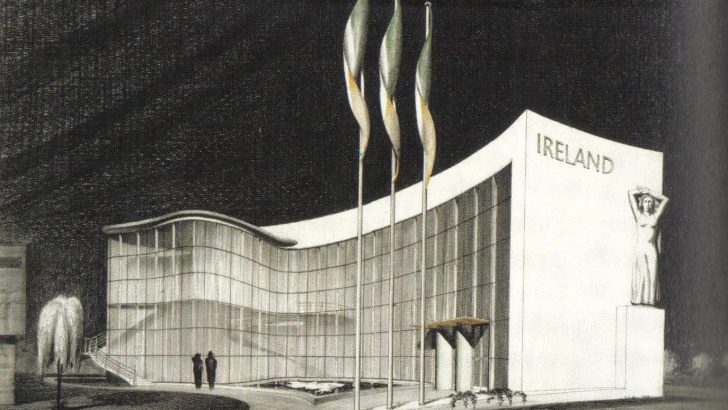Art, Ireland, and the Irish Diaspora: Chicago, Dublin, New York 1893-1939, Culture, Connections, and Controversies
by Éimear O’Connor (Irish Academic Press, €35.00/£35.00)
First off it has to be said that this is a remarkable book, which will be read by anyone interested in the course of Irish culture since the Irish Revival in the 1890s down to the eve of World War II, the era of Jack Yeats to Michael Scott so to speak. This will be for some familiar territory, but in these elegantly-designed and illustration-filled pages there are new facts, fresh insights, and food for thought on every page.
Turning over these pages I was reminded of the cottage which filmmaker Robert Flaherty built to use as a studio on Inis Mór. It was fitted with a huge east facing sky-light (one of Peadar O’Donnell’s ‘Big windows’ perhaps) which flooded the scene of the director’s artistic activities with light. This book, too, lets in a flood of light on the Irish cultural scene over two generations. As a result it will be a ‘must have’ buy for countless people.
Opening
In the opening sections we meet again Lady Aberdeen and the Chicago exhibition, which is well described by Simon Welfare in his enchanting biography of the Aberdeens’ (recently reviewed in these pages).
But in between these two poles we meet the artists, writers, poets, critics, painters, patrons and those who purchased, those who imagined, created and sustained the whole idea of a new culture for a new nation – a nation able on the one hand to look to the past, but also anxious to play a part in the new age of air flight and international accord (when the great powers allowed it).
The patrons were such people as New Yorker John Quinn, whose multitudinous activities were so important. The book is peculiarly rich in the famous and the less famous, forming a web, or proto-internet, the effects of which linger to this day. In this book the readers are able to discover so much not about the usual gallery of patriots and politicians, but about the creative soul of the Irish nation.
Research
A wonderful book, and a wonderful read. It is the outcome of years of concentrated research: every August for six years was passed by Éimar O’Connor in torrid steaming New York, from where every sensible person had fled to the seaside or the mountains. But such is the personally-demanding nature of the work that went into this book, all 360 pages of it.
Éimear O’Connor’s interests have always been in images of nation-making from the Celtic Twilight to the white heat of modernism. But there were also Irish artists whom this did not interest, working in America and Ireland. I am thinking of, say, Timothy O’Sullivan, in the previous generation to the Yeats brothers, photographer of the Civil War and of the Far West – a great artist certainly, but how did his Irish origins (he was born to Irish parents about 1840) affect his work. Breaking away from the parameters of nationalism, there are many things yet to learn about Irish artists and what ‘Irish art’ might mean in a larger context. A wonderful prospect for exploration.


 Peter Costello
Peter Costello Michael Scott’s modernist conception of the Irish pavilion for the New York World Fair in 1939.
Michael Scott’s modernist conception of the Irish pavilion for the New York World Fair in 1939. 